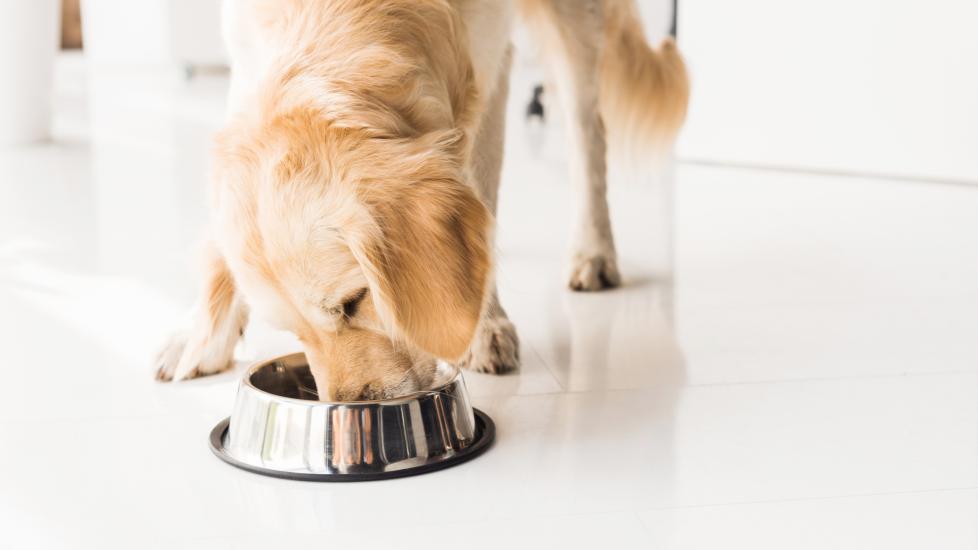Can Dogs Eat Seaweed?
If you’re considering alternative treat options for your dog, you may have wondered whether dogs can eat seaweed. This nutrient-dense food is packed with vitamins, plus it’s low in calories, high in fiber and water content, and rich in minerals found in seawater.
With all those benefits for humans, it’s totally reasonable to be curious about whether dogs can have seaweed. While Fido is probably not begging for the green stuff like he salivates after steak, sneaking a sprinkle of seaweed into his food dish can boost his nutrient intake.
But there are some caveats to feeding your dog seaweed. Here’s what to know.
Can Dogs Have Seaweed?
For the most part, healthy adult dogs can have seaweed as an occasional treat or mixed into their food dish. But you’ll want to watch the amount they eat, be mindful of where it’s from (food-grade only! no beach seaweed!), and avoid extra ingredients that can be found in seaweed snacks or salads, including soy sauce, salt, or garlic.
Most types of seaweed found in the health aisle at your grocery store—including nori, kelp, and dulse—are non-toxic to dogs. And there are some nutritional benefits to adding seaweed to your dog’s dish as a bonus to their well-balanced dog food diet.
Seaweed has several nutritional benefits for dogs (and humans, for that matter). It’s a great source of vitamins and minerals, including iodine, calcium, iron, potassium, and magnesium. Seaweed also contains polysaccharides, which are essential nutrients that are good for gut health. Seaweed is also a good source of fiber, which can aid in digestion, and is low in calories.
Is Seaweed Bad for Dogs?
Too much seaweed can be harmful to your pooch, and dogs with health issues or other sensitivities may want to avoid it—especially if they have heart or thyroid issues. As with any “people” food, moderation is key.
Though dogs need some iodine to support healthy thyroid function, pups that are on medication for any thyroid issues should not eat seaweed. This is because excess iodine found in seaweed can cause thyroiditis.
Seaweed’s sodium content can also be quite high, which may pose a threat to dogs with cardiovascular issues. Talk to your vet before sharing any seaweed with your dog. They can offer advice tailored to your pet’s health history, age, weight, and breed.
Can Dogs Eat Wild Seaweed?

While seaweed from the grocery store is safe for dogs, do not let your dog eat wild seaweed found on the beach. Wild seaweed is full of salt, and your dog can get very sick if he eats too much.
Stick to the food-grade seaweed at home, and call your vet if your dog appears unwell after getting into seaweed at the beach.
How To Feed Your Dog Seaweed
How you prepare seaweed for your dog depends on the type of seaweed (dried, powdered, or fresh) you’re working with.
Seaweed Supplements
If you opt for a supplement in powdered form, follow the instructions on the label. This will tell you how much to measure out, based on your dog’s weight. Try mixing the powder into their usual food dish for an extra boost of vitamins and minerals.
Fresh Seaweed
Fresh seaweed—including the red, green, or brown algae varieties commonly found in soup, salad, and rice bowls—is fine to share with your pooch. Cut it into small, manageable pieces (about ½ inch or smaller) to prevent choking hazards. Rinse off any excess salt and do not feed to your dog if the seaweed is seasoned in onion or garlic.
Dried Seaweed
Dried seaweed snacks like nori can be offered as a treat or crumbled into your dog’s regular food bowl for extra flavor. Break any prepackaged sheets into smaller portions to make them easier for your dog to chew and digest. Avoid giving your dog the nori from your sushi rolls, as the roll’s raw fish is not good for dogs and can make them sick.
How Much Seaweed Can Dogs Eat?
Follow the 10% rule: Treats (including safe ones like seaweed) should only make up 10% of a dog’s daily calorie intake. The rest should come from a diet of well-balanced dog food.
For small dogs, a few sprinkles of seaweed per meal is enough. Larger dogs can have slightly larger portions. Take care not to give your dog too much seaweed, which can cause digestive issues and raise their sodium intake to unhealthy amounts.
Go slow. Offer your pup a small piece or a few flakes and monitor their reaction. If there are no adverse effects, you can gradually increase the amount to the recommended maximum portion listed in the table below.
|
Dog Size |
Dried Seaweed |
Fresh Seaweed |
|
Extra small (2–20 pounds) |
¼ teaspoon per day |
One ½-inch strip per day |
|
Small (21–30 pounds) |
½ teaspoon per day |
Two ½-inch strips per day |
|
Medium (31–5 pounds) |
1 teaspoon per day |
Three ½-inch strips per day |
|
Large (51–90 pounds) |
1.5 teaspoons per day |
Four ½-inch strips per day |
|
Extra large (91+ pounds) |
2 teaspoons per day |
Five ½-inch strips per day |
Other Foods To Feed Your Dog
There are many other “human foods” that are safe for dogs to eat. When given in moderation, these can be a nutritious alternative to packaged dog treats—as long as your vet says it’s OK.
-
Peanuts (and peanut butter)
Remember to always talk to your vet before introducing new foods to your dog's bowl, as they may have recommendations that take into account your pet’s health, age, and weight.
Featured Image: LightFieldStudios/iStock / Getty Images Plus via Getty Images
